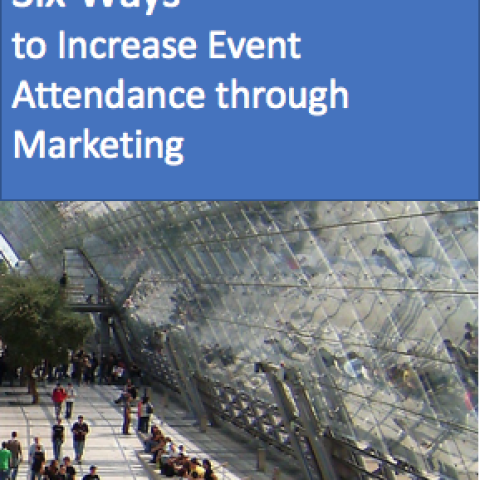Six Ways to Increase Event Attendance through Marketing

Increasing outreach is an ongoing challenge in event marketing. How do you get more attendees to come to your event? You’re putting in significant time, effort, and money to design and deliver a great program but if nobody attends your work is all for naught.
I recently attended a webinar hosted by the Event Tech Tribe called “20 Event Marketing Hacks to Get Butts in Seats,” that offered some useful tips and tricks on how to do just that. I’ve pulled six of these to concentrate on here: three internal to your organization, and three external.
Internal
Content personalization, A/B testing, and communications planning are some of the basic best practices of event marketing outreach. These are all things that you can manage and control directly.
1. Content personalization – People want to interact with other people, not with a faceless brand. Go beyond the simple “Hello, [FirstName]” to ensure your message is delivered – and received. Consider personalizing the subject line. Apply a real name to the sender: don’t just send from your company name or the event name. Not only does this help your content get through spam filters, it will also help with open rates.
2. A/B Testing - Test the efficacy of your content by using simple changes, such as using a different subject line, color, or font. Try rich HTML vs. plain text. Make sure you keep the variables to a minimum so you’ll be able to analyze which change was responsible for a higher open or clickthrough rate.
3. Communications Planning – Know your audience. Send the right information to the right people at the right time – and don’t send too much or you’ll risk having your content labeled as spam!
External
Branching out and using your extended network can help you deliver your message to a broader audience. Word of mouth is one of the most highly trusted sources of advertising/marketing, because as I mentioned earlier, people want to connect with other people.
4. Industry Communities – Leverage the communities, associations, and industry organizations with which your target audience is already engaged. Maybe they have a calendar where you can add your event, or will allow you to contribute a blog post, or will provide their own social media outreach on your behalf. Depending on the type of community, you can generally provide content either directly or to the administrator to share with their members.
5. Public Relations – PR can be a great amplifier, giving you a way to reach people outside of your marketing database. A great press release opens with the lead (who are you talking about), what are you doing (your event), and why readers should care – then just a couple of key messages, no deep dives, a couple of quotes, and a closing paragraph. Be sure to include links back to your site to increase your SEO!
6. Influencer Relations – Every industry has subject matter experts (SMEs) who are active on social media. Do some research on who the experts and influencers are within your industry, and reach out. Provide them with content and stories. Offer them ways to participate in your event – and make it a memorable, positive experience that they will want to promote to their followers.
These are just a few of the ways you can harness the power of marketing to attract new prospects and grow your event audience. In order to analyze your results, be sure to provide methods for tracking each type of outreach you do: use tracking codes, referral codes, campaign-specific URLs and short links, and tools like Google Analytics.
Being able to show how your efforts directly link to the growth of your event helps position you as a strategic, valuable resource and get the recognition you deserve.


Comments
Great post - lots of ideas…
Great post - lots of ideas that can be easily implemented & improve ROI.
Add new comment